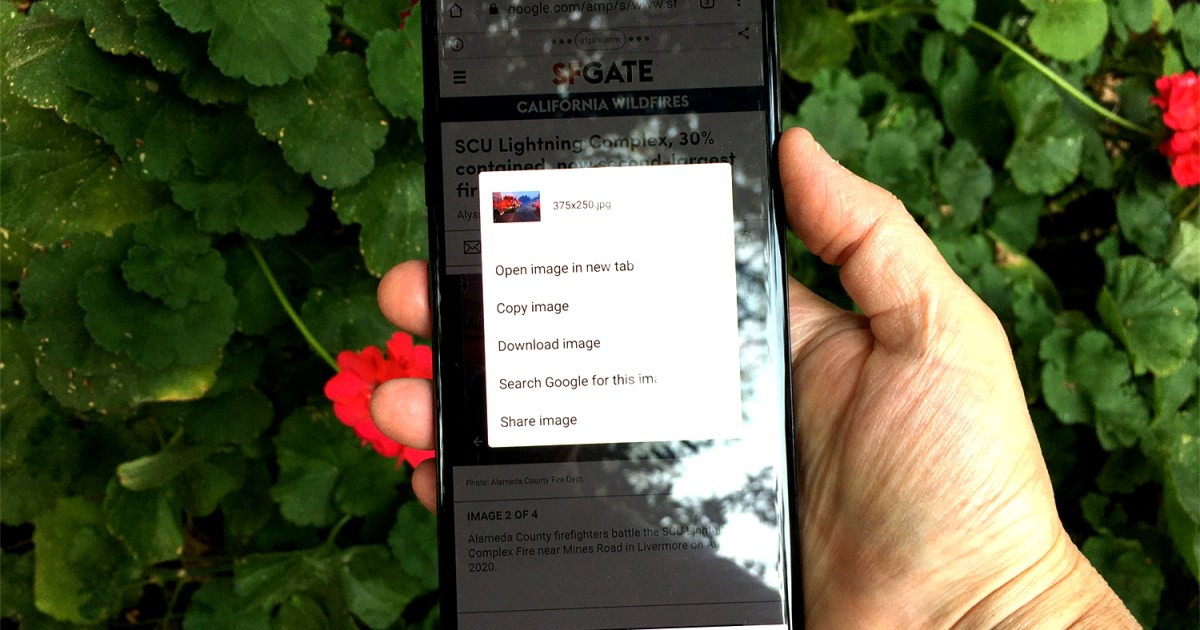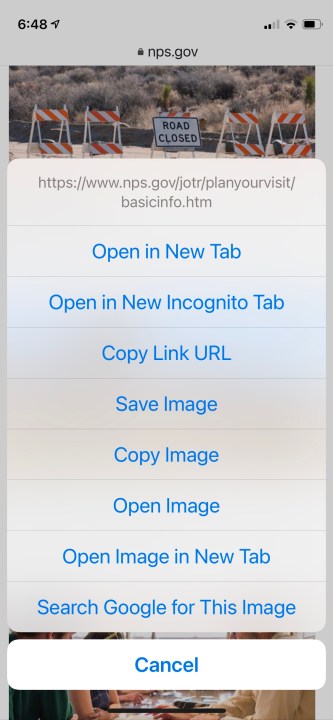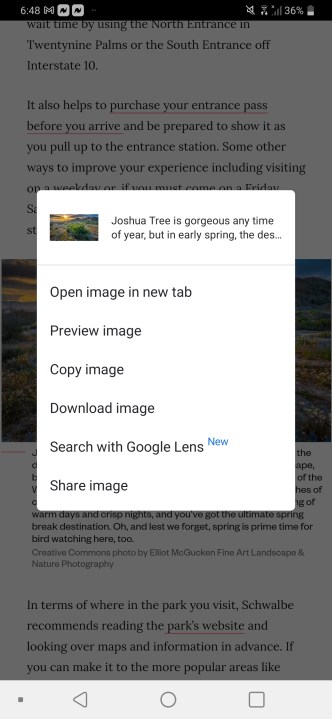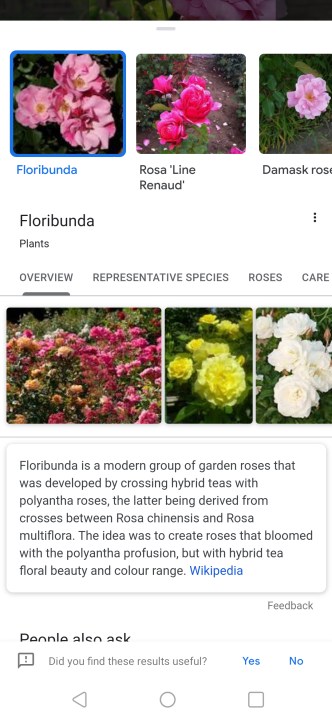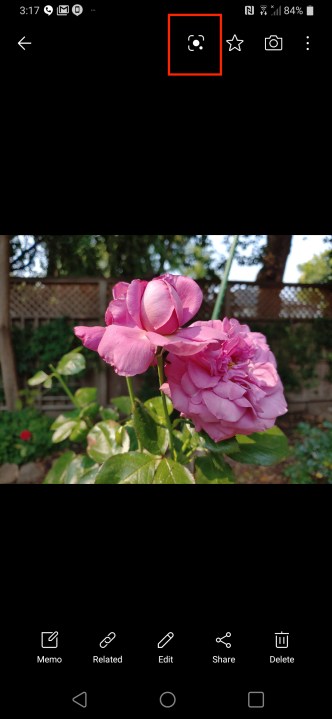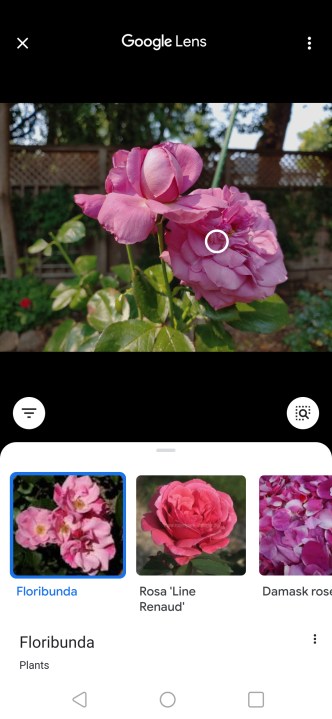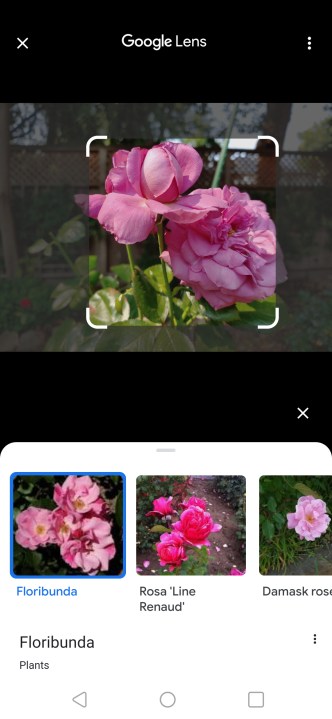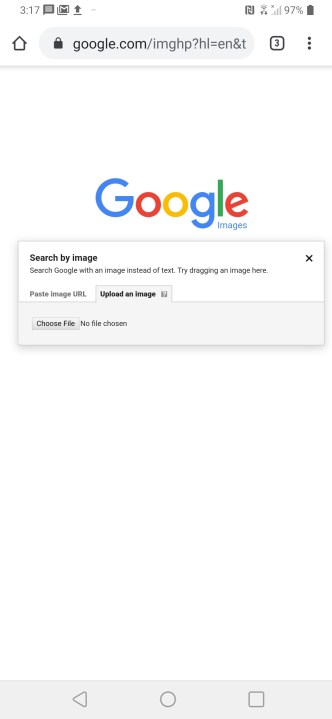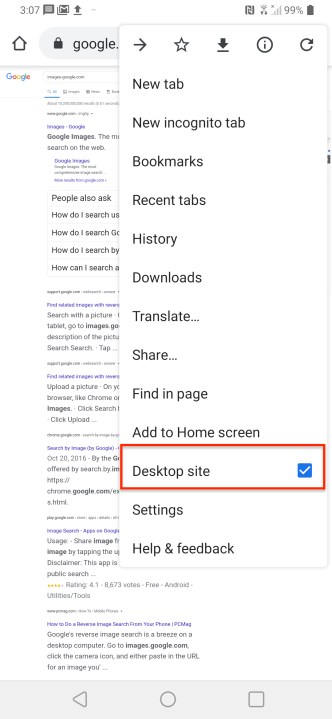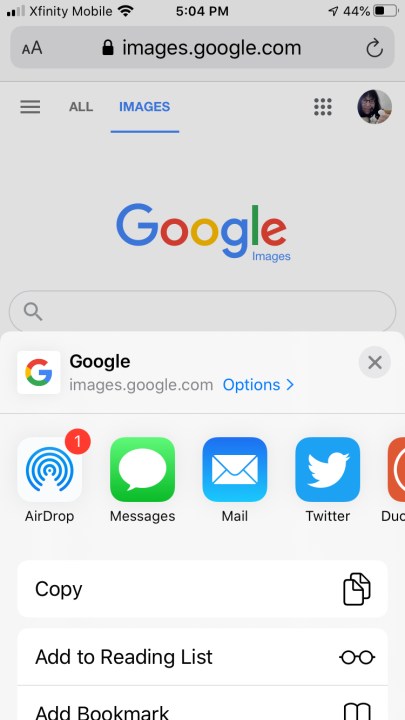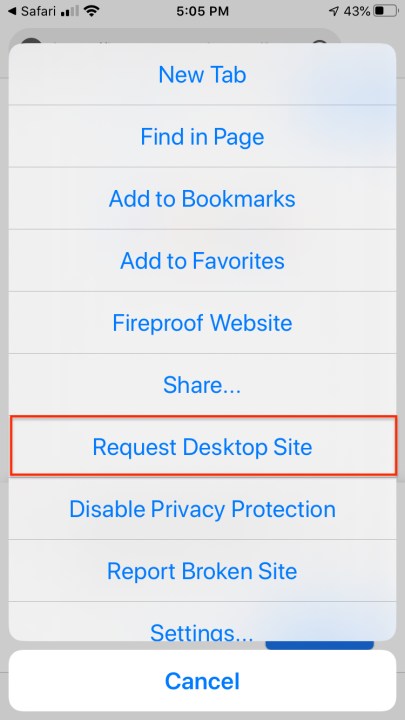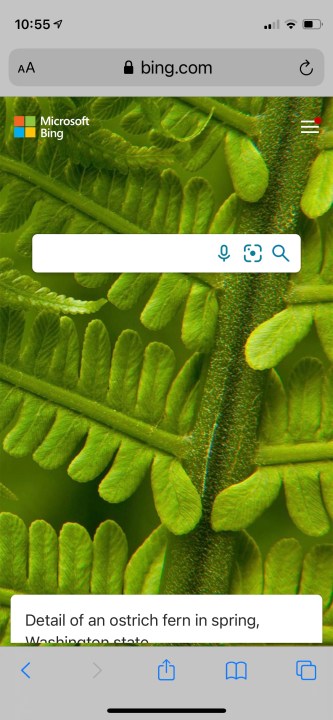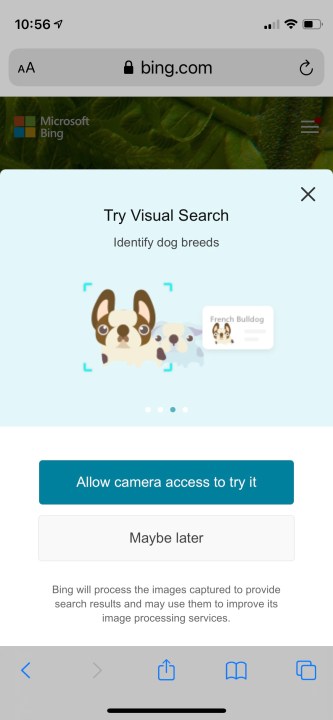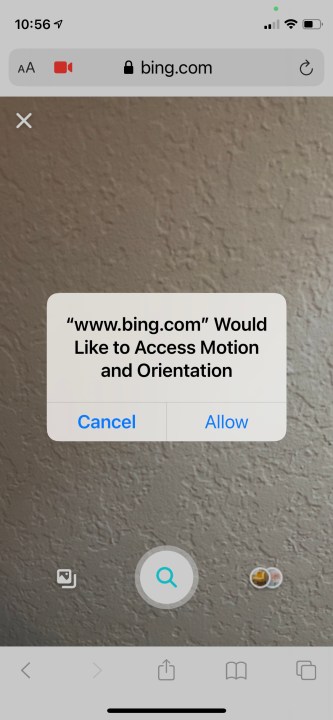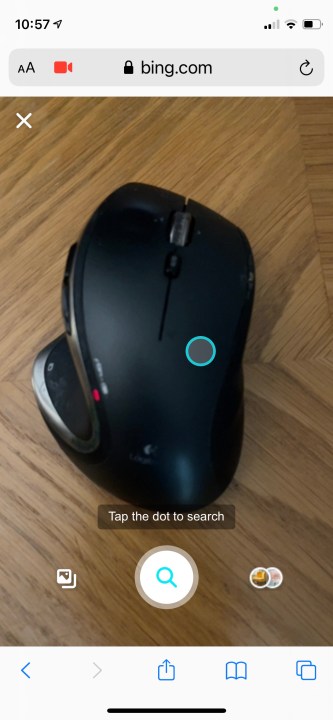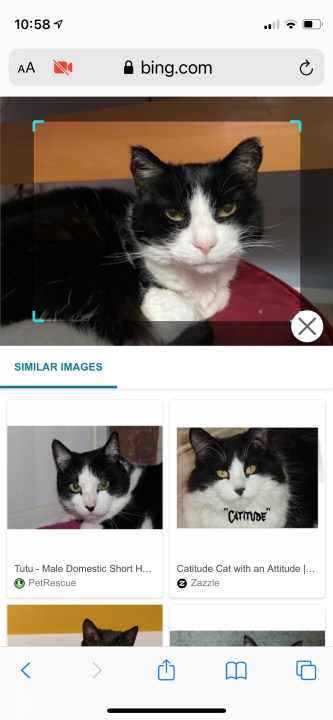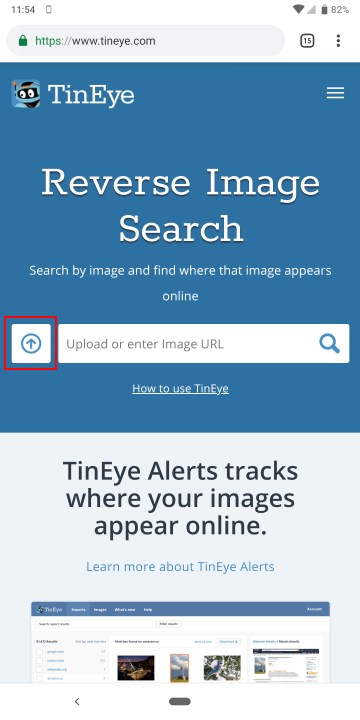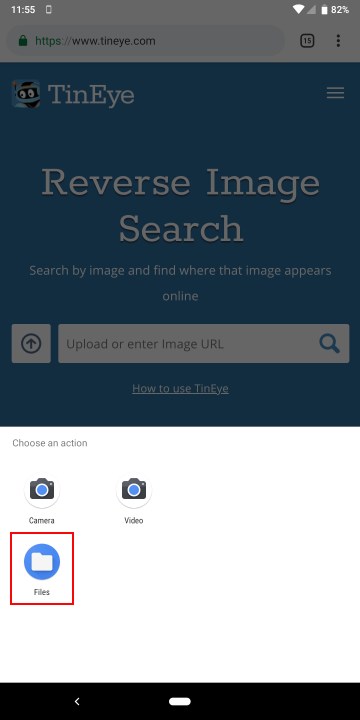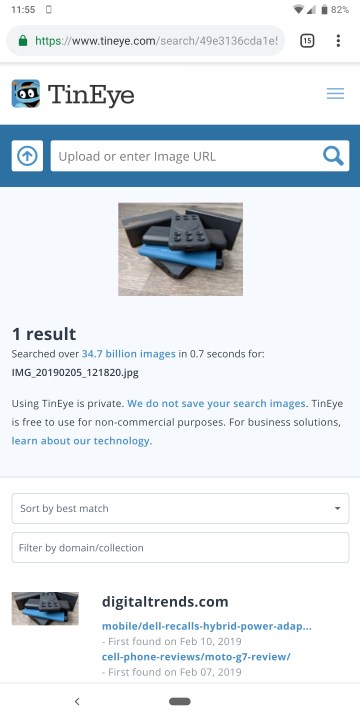A reverse image search is a handy way to figure out the origin of an image, locate similar images, or fact check an image. There are a multitude of ways to perform a reverse image search on your mobile device, whether you’re using an Android phone or an iPhone.
For example, here’s how to do a reverse image search via Google lens on Android:
- Choose an image in your photo library or from a webpage.
- Tap the Lens icon
- The app will then perform a reverse image lookup, identify the image, and offer alternate similar, images.
In this guide, we will go into detail about this and several other ways to do a reverse search on your mobile device with various tools, apps, and websites.
See more
How to reverse search an image using Google Chrome
If you’re using Chrome on Android or iPhone, it’s easy to perform a Google image search. Here’s how to get started.
Step 1: Go to your selected image in the Chrome browser.
Step 2: Tap and hold on the image until a menu pops up.
Step 3: Tap on Search Google For This Image (iOS 14) or Search with Google Lens (Android 10).
Step 4: See the results.
How to reverse search an image using Google Lens
Your mobile device may have shipped with Google Lens preinstalled, and the app is still available separately on the Google Play Store for Android. For iOS, Lens is now incorporated into the main Google Search app, so there’s no need for a separate app download on the iPhone.
Step 1: Navigate to an image in your photo library or from a webpage.
Step 2: Tap the Lens icon to start the image-recognition operation.
Step 3: The app will then perform a reverse image lookup, identify the image, and offer alternate similar, images.
How to reverse search an image in Android
If someone sent you an image, or you already have it downloaded on your phone, you can upload it to perform a Google reverse image search. This method works with any Android browser. To upload an image to perform the reverse image search, you need the desktop version of Google’s image search. Here’s how to get started.
Step 1: Go to images.google.com in your browser.
Step 2: You want the desktop version, so you’ll need to select it. In Chrome, tap the three dots at the top right to open the More menu.
Step 3: Tick the Desktop Site option.
Step 4: Tap on the small camera icon to get the option to upload an image.
How to reverse search an image on an iPhone
You can reverse search an image on an iPhone, too. Here’s how to get started.
Step 1: Go to images.google.com.
Step 2: You want the desktop version, so you’ll need to request it. In Safari, tap the Share icon, with the arrow pointing up, to open the share menu. In Chrome, tap the three-dot More icon at the bottom-right of the screen.
Step 3: Scroll down the options until you find Request Desktop Site and tap it.
Step 4: Tap on the tiny camera icon to get the option to upload an image.
How to reverse search an image on Bing
Reverse image searching on Bing is much the same process on all platforms. Just go to the Bing home page and select the image search icon in the address bar. Then upload one or more images.
Step 1: On any browser — desktop or mobile — type the Bing home page address in the address bar.
Step 2: Tap the middle Lens icon.
Step 3: Tap Allow Camera Access to start a visual search.
Step 4: Tap Allow to let the app access motion and orientation.
Step 5: You can identify anything in the vicinity automatically by pointing your smartphone camera directly at any object, as the app immediately reads what it is.
Step 6: Tap the magnifying glass button for more information.
Step 7: Alternately, you can shoot a fresh image with your camera app or choose one or more images from your photo gallery for identification and reference.
How to reverse search an image on TinEye
You have a few more options if you want to perform a reverse image search, regardless of which mobile platform or web browser you’re using. TinEye is a popular website that will help you perform a reverse image search.
Step 1: In your chosen web browser, go to tineye.com.
Step 2: Tap the arrow icon to the left of the search box to upload a picture.
Step 3: You can take a new picture using your device’s camera, pick an image from your photo gallery, or browse another location. The options you’ll get are slightly different depending on your phone.
Step 4: Once your picture uploads, you’ll see any matches found.
Use an app to perform a reverse image search
There are several specialty apps dedicated to performing reverse image searches in Android or iPhone, all of which can spare you from having to open your browser every time you want to look up a picture. Here are a few of the best ones.
Image Search app
With the free Image Search app, you can search images by keywords or image file name, share images to third-party apps, download images to set them as your smartphone’s wallpaper, search animated GIF images, search history, scale display of the image. and search specific filters for content, type, color, size, and time.
Photo Sherlock app
Photo Sherlock lets you upload an image from your gallery or snap a photo to perform a quick reverse image search in the Google and Yandex engines. Just tap the gallery or camera icon at the bottom of the window, crop if you wish, and perform the search to learn more information about the image.
Google Photos app
The Google Photos app features a photo recognition technology that was originally released as an app of its own called Google Lens. Since 2017, the Google Lens team has integrated this tech into Google’s search engine, Google Photos, and Google Assistant for both iPhone and Android. This lets users explore images on the web and conduct reverse image searches. You can execute reverse image searches on saved photos by choosing the photo you want and then tapping the Google Lens icon.
Reversee app
Reversee is a fantastic app for the iPhone that allows users to rotate and crop their images before they start their search. Reversee also works well as an iOS extension and lets you use it within the Photos, Safari, and Chrome apps. When you opt for the ad-free professional version, you get a variety of additional features. These include the ability to edit photos, browse through images from multiple search engines like Google, Bing, and Yandex, paste picture URL addresses, and compile detailed data about the images you find.
Search By Image app
Similar to Reversee, Android’s Search By Image app allows you to make basic photo edits before using them in searches. With this app, you get all the features you could ever want in a reverse image search app, from support for Google, Yandex, and Tineye to the ability to open shared photos from social media platforms like Facebook and Twitter.
Reverse image search tools to check for stolen work
Reverse image search apps like the ones listed above are great for finding similar photos, so they can be helpful for graphic designers, fashion designers, interior decorators, and other professionals who work with photographs. For instance, if you are one of these artists, reverse image search apps can help you easily determine whether your original works have been stolen.
Keeping this purpose in mind, some companies have designed specialized reverse image search tools to help you check for stolen work. Here are two useful options to consider.

Image used with permission by copyright holder
Berify search tool
Berify is a reverse image search service created to help artists, models, vloggers, and other professionals to protect their intellectual property. It’s the only app that also helps you track similar videos to check for stolen content, making it a key resource for online content creators.

Image used with permission by copyright holder
Pixsy search tool
Pixsy is a free-to-use online platform created by a photographer who experienced online image theft. Today, the tool offers five specialized features for photographers and online content creators to protect their work: Monitor (to keep track of where your images appear online), Resolve (to receive compensation for stolen work), Takedown (to remove stolen images from the internet), Register (to protect your images from being stolen and misused), and Integrations (to link this data with other websites).
Frequently Asked Questions
Can I reverse image search from my gallery?
Yes, you can reverse image search a photo from your gallery. All of the reverse image search tools support them, from Google to Bing to TinEye. Our favorite tool for performing a reverse image search of a gallery photo is Google Lens.
Can you reverse image search a screenshot?
Yes, you can reverse image search a screenshot, although not all reverse image platforms support them. The method for performing a reverse image search of a screenshot is the same as it is for any other photo, but make sure to do the following:
- Crop the image to focus your search and eliminate inaccurate image results.
- Don’t apply filters to the screenshot as this could skew your results.
- Take a clear and well-lit screenshot.
How do I do a reverse image search on my Android?
Here’s how to do a reverse image search on your Android phone:
- Go to images.google.com in your browser.
- You want the desktop version, so you’ll need to select it. In Chrome, tap the three dots at the top right to open the More menu.
- Tick the Desktop Site option.
- Tap on the small camera icon to get the option to upload an image.
Editors’ Recommendations

